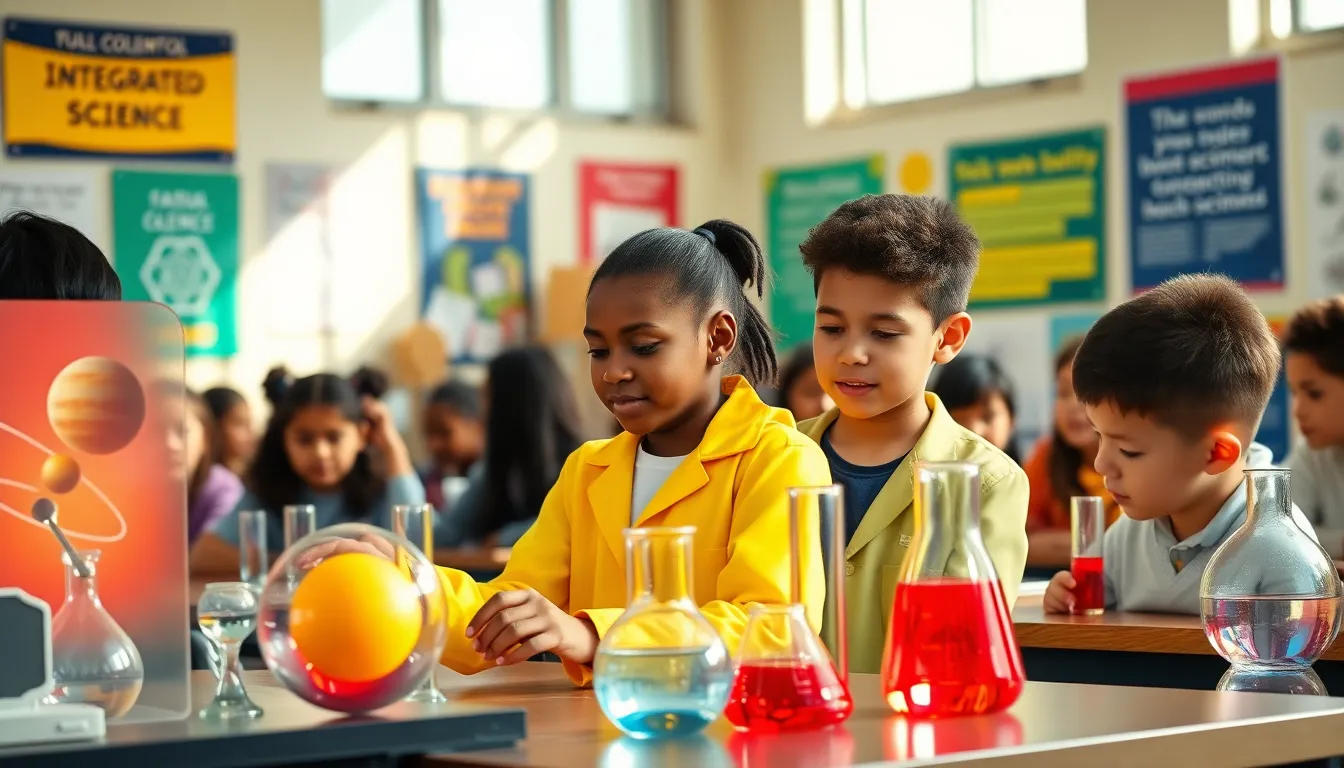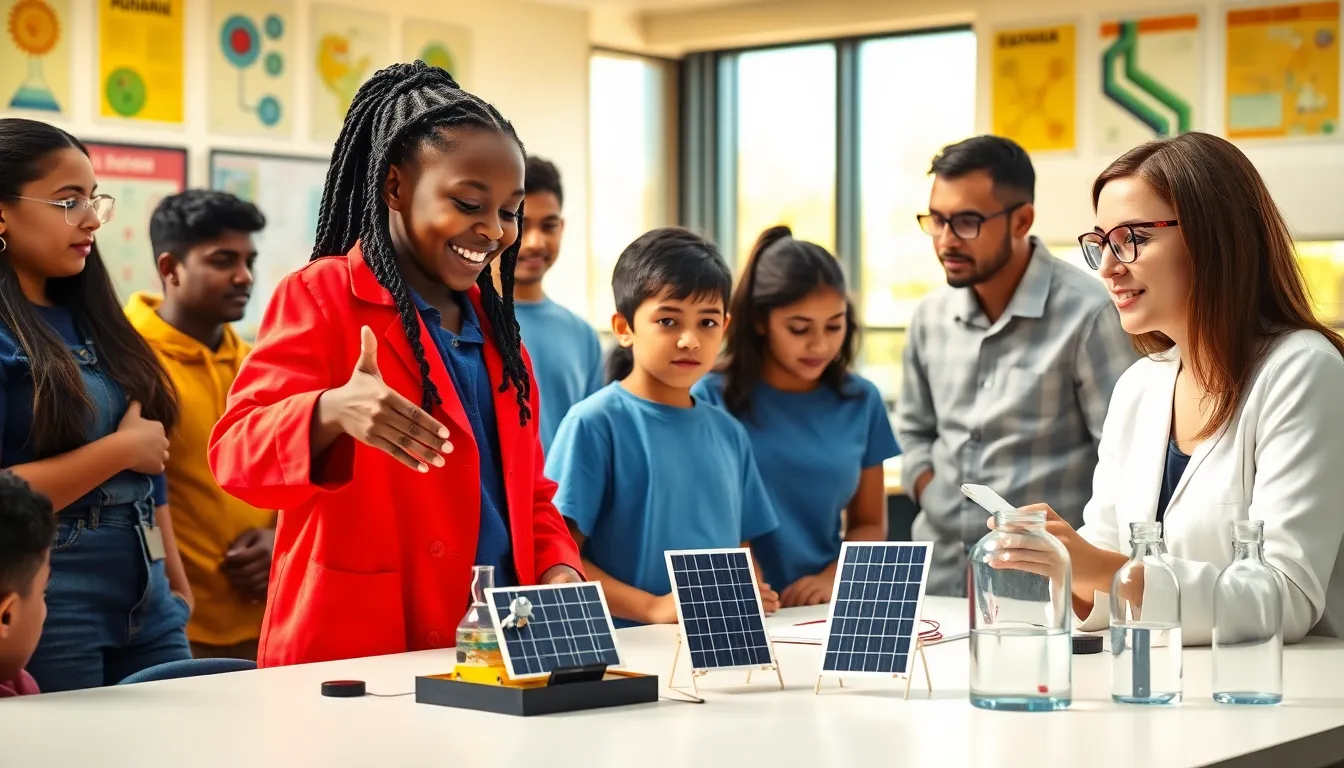In a rapidly evolving world, the need for an integrated approach to science education is more critical than ever. Redwebzine Integrated Science represents a transformative method of teaching that combines various scientific disciplines, empowering students to understand complex concepts and real-world applications. This article delves into the essence of integrated science, its significance in education, key components of Redwebzine Integrated Science, and its innovative approaches that enhance learning outcomes.
Table of Contents
ToggleOverview of Integrated Science

Integrated science is an interdisciplinary approach that merges various scientific domains, such as biology, chemistry, physics, and earth sciences, into a cohesive curriculum. This method encourages students to see connections between different sciences rather than viewing them as isolated subjects. By promoting collaboration and inquiry-based learning, integrated science aims to provide students with a holistic understanding of scientific concepts and processes. Instead of rote memorization, this approach fosters critical thinking and problem-solving skills that are essential for navigating complex, real-world issues.
Importance of Integrated Science in Education
The importance of integrated science in education cannot be overstated. In today’s interconnected world, the boundaries between scientific fields are increasingly blurred. Solutions to pressing global challenges, such as climate change, public health, and technological advancements, often require knowledge and insights from multiple disciplines.
Integrating science education not only prepares students for future academic endeavors but also cultivates skills essential for their personal and professional lives. For instance, students learn to approach problems analytically, conduct interdisciplinary research, and collaborate effectively in diverse teams. This skill set is vital in a workforce that demands adaptability and innovative thinking.
Key Components of Redwebzine Integrated Science
Redwebzine Integrated Science incorporates various key components that enhance the learning experience:
- Interdisciplinary Curriculum: The curriculum is designed to intertwine subjects like biology, chemistry, and physics, allowing students to explore the relationships between them.
- Hands-on Learning: Practical experiments and fieldwork are integral to the program, enabling students to apply theoretical knowledge to real-world situations.
- Technology Integration: Utilizing digital tools and platforms, Redwebzine enhances interactive learning experiences, engaging students through simulations and visual aids.
- Real-World Applications: Case studies and projects focused on current scientific issues provide context, demonstrating the relevance of scientific principles in everyday life.
Innovative Approaches in Redwebzine Integrated Science
Redwebzine employs several innovative approaches to reinforce the integrated science curriculum:
- Project-Based Learning (PBL): Students tackle real-world problems in groups, promoting teamwork and critical thinking. For example, a project might involve designing a sustainable garden that considers soil chemistry, plant biology, and environmental science.
- Inquiry-Based Learning: This method encourages students to ask questions, conduct investigations, and derive conclusions independently, fostering a sense of ownership in their learning process.
- Flipped Classroom Model: By assigning lecture materials for home study and dedicating class time for discussion and hands-on activities, students engage more deeply with the material and retain knowledge better.
Case Studies and Applications
Successful case studies exemplify the effectiveness of Redwebzine Integrated Science in various educational settings. For instance:
- Urban Water Management: In a recent initiative, students explored the chemistry and biology related to local water quality. They conducted tests on local water sources, analyzed the data, and presented their findings to community stakeholders, showcasing real-world scientific impacts.
- Renewable Energy Projects: Another case involved students designing solar-powered devices. Through this project, they applied knowledge from physics and environmental science to create sustainable solutions, reinforcing the program’s focus on innovation and real-world application.
Such case studies demonstrate how integrated science principles empower students to address societal issues creatively, positioning them as active, informed participants in their communities.
Challenges and Future Directions
Even though its advantages, implementing integrated science education like Redwebzine faces several challenges:
- Curriculum Development: Crafting an effective interdisciplinary curriculum requires collaboration among educators from various scientific backgrounds, which can be challenging to coordinate.
- Resource Allocation: Schools may struggle with securing the necessary resources, such as laboratory equipment and technology, essential for providing a comprehensive integrated science education.
- Assessment Methods: Traditional assessment methods may not adequately evaluate students’ understanding of integrated concepts. Developing new assessments that reflect diverse learning outcomes is crucial.
Looking forward, the future of integrated science education appears promising. As educators become increasingly aware of the benefits, the push for pedagogical reforms will likely lead to more widespread adoption of integrated science programs, including those offered by Redwebzine.
Conclusion
To conclude, Redwebzine Integrated Science stands at the forefront of educational innovation, effectively merging various scientific disciplines into a cohesive learning framework. The emphasis on real-world applications, project-based learning, and technology integration fosters a rich educational experience that equips students with critical skills needed for future challenges. As the demand for interdisciplinary solutions continues to grow, integrated science will play a pivotal role in shaping the next generation of scientists, thinkers, and leaders.






